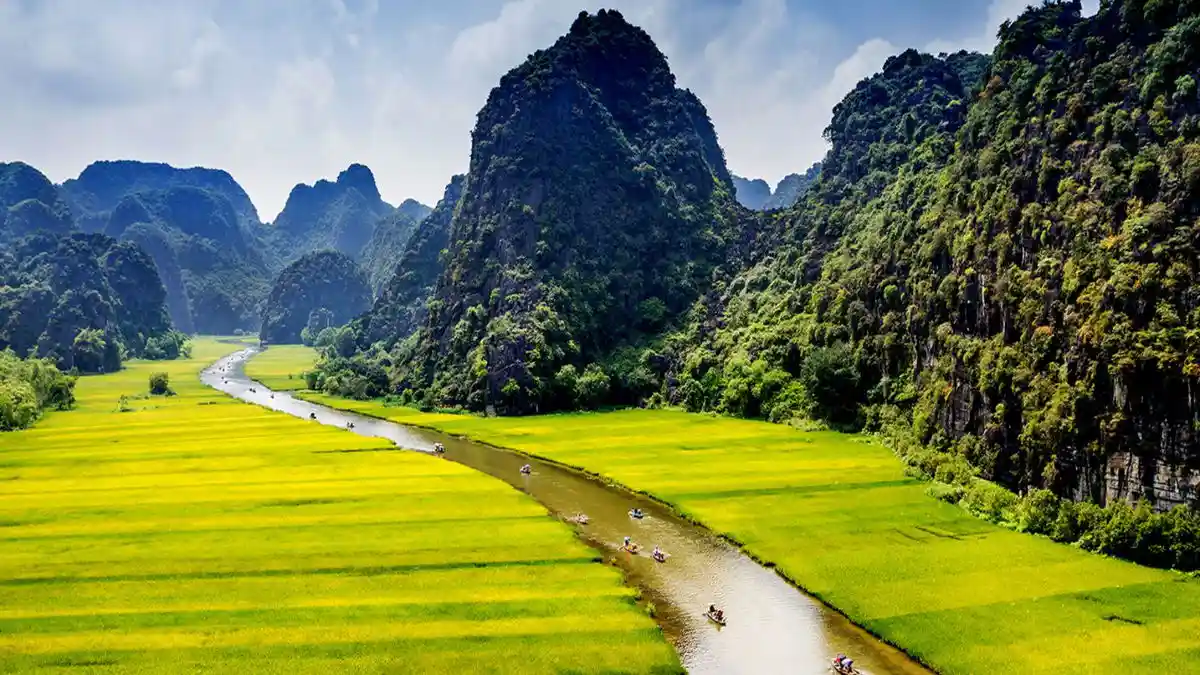Vietnam has emerged as a standout destination in South East Asia, welcoming a staggering 12.23 million international visitors in the first seven months of 2025, according to the latest report from the National Statistics Office. The tourism boom is reshaping Vietnam’s global image and economy, with a 22.5% surge in tourism from the same periodin 2024. At Ho Chi Minh City’s Tan Son Nhat Airport, this growth comes to life: a chorus of accents—Australian, French, Hindi, and more—fills the immigration line, each traveler part of a wave fueling double-digit gains in retail and service revenues. Yet, as crowds swell in the bustling baggage claim, questions of sustainability and infrastructure linger, testing Vietnam’s ability to balance its soaring appeal with long-term resilience.
A Surge in Global Visitors
The numbers tell a compelling story of Vietnam’s rising prominence on the world stage. In July 2025 alone, the country welcomed 1.56 million international visitors, a 6.8% jump from June and a striking 35.7% increase from July 2024. The bulk of these arrivals—85.1% or 10.4 million—came by air, a figure that rose by 23.8% year-on-year. Land arrivals accounted for 13.4% of the total at 1.6 million, up 15.8%, while sea arrivals, though smaller at 183,900, grew by 11.1% over the previous year.
Asia remains the dominant source market, contributing 9.63 million visitors, a 22.4% increase from last year. Europe follows with 1.53 million arrivals, up by an impressive 31.8%, while the Americas, Oceania, and Africa contributed 670,000, 357,500, and 30,100 visitors respectively, with growth rates ranging from 3.1% to 15.7%. These figures underscore Vietnam’s broadening appeal across diverse regions, positioning it as a must-visit destination for travelers worldwide.
Policy and Promotion Drive Success
Behind this remarkable growth lie strategic efforts by Vietnamese authorities to make the country more accessible and attractive to international tourists. Streamlined visa policies, including the expansion of e-visa options, have lowered barriers for entry, allowing travelers from more countries to visit with ease. Additionally, intensified promotional campaigns have showcased Vietnam’s rich cultural heritage, stunning landscapes, and vibrant cities to a global audience.
National holiday celebrations have also played a key role, drawing crowds with their colorful displays and festive atmosphere. Events in iconic destinations like Hanoi, Ho Chi Minh City, Da Nang, Phu Quoc, and Nha Trang have captured the imagination of visitors, offering a blend of historical significance and modern entertainment. These cities, known for their diverse tourism offerings and extensive accommodation options, continue to be focal points for the influx of travelers.
Economic Ripple Effects
The tourism boom is not just about numbers of arrivals; it is also a significant driver of economic activity. The National Statistics Office reports a 9.3% year-on-year increase in total retail sales of goods and consumer service revenue for the first seven months of 2025, a direct outcome of heightened tourism and trade. Revenue from accommodation and food services reached an estimated VND481.9 trillion (~US$18.97 billion), up 15% from the previous year.
Key urban centers have reaped the benefits of this surge. Ho Chi Minh City led with a 19.7% increase in revenue, followed closely by Da Nang at 18.6%, Can Tho at 14.8%, Hanoi at 12%, and Hai Phong at 11%. Travel and tourism services alone generated VND52.8 trillion (~US$2.08 billion) in revenue during the same period, a 20% rise year-on-year. Provinces like Dong Nai saw the highest growth at 31.5%, with Lao Cai, Ho Chi Minh City, Hue, and Hanoi also posting strong gains ranging from 18.8% to 28.4%.
This economic uptick highlights tourism’s role as a catalyst for broader growth, supporting local businesses, creating jobs, and boosting infrastructure development. From street vendors in Hanoi to luxury resorts in Phu Quoc, the benefits of increased visitor spending are felt across various sectors, reinforcing tourism’s status as a pillar of Vietnam’s economy.
Challenges Amid Growth
While the numbers are impressive, sustaining this momentum presents challenges. Infrastructure in popular destinations must keep pace with the growing number of visitors to avoid overcrowding and ensure a positive experience. Environmental concerns also loom large, as increased footfall in areas like Ha Long Bay and Phong Nha-Ke Bang National Park raises questions about conservation and sustainable tourism practices.
Moreover, competition within the region remains fierce. Neighboring countries such as Thailand, Malaysia, and Indonesia are also vying for international tourists with their own promotional campaigns and visa relaxations. Vietnam must continue to innovate, perhaps by diversifying its offerings to include lesser-known destinations or enhancing digital tools for traveler convenience, to maintain its competitive edge.
Cultural Appeal and Global Recognition
Vietnam’s allure lies in its ability to blend tradition with modernity. Visitors are drawn to the bustling streets of Ho Chi Minh City, where colonial architecture meets cutting-edge skyscrapers, and to the serene beauty of Hanoi’s Old Quarter, where ancient temples stand alongside trendy cafes. Coastal cities like Da Nang and Nha Trang offer pristine beaches and luxury resorts, while Phu Quoc provides a tropical escape with its unspoiled landscapes.
Cultural festivals and historical sites further enhance Vietnam’s appeal. The image of a tourist taking a selfie in front of incense sticks arranged as a Vietnamese flag in Quang Phu Cau village near Hanoi captures the unique blend of patriotism and tradition that resonates with visitors. Such moments, shared widely on social media, amplify Vietnam’s visibility and draw more curious travelers to explore its heritage.
Looking Ahead: A Sustainable Future?
As Vietnam celebrates its record-breaking tourism figures, the focus now shifts to balancing growth with sustainability. Investments in infrastructure, training for hospitality staff, and policies to protect natural and cultural assets will be crucial in ensuring that the tourism sector remains a boon rather than a burden. Partnerships with international organizations could also help in adopting best practices for eco-friendly tourism.
Additionally, leveraging technology could enhance the visitor experience. Digital platforms for booking, virtual tours of historical sites, and real-time travel updates can make Vietnam an even more accessible destination. The government’s continued emphasis on e-visa expansions and targeted marketing campaigns will likely keep the momentum going, potentially setting new records in the months ahead.
Economically, the ripple effects of tourism are undeniable, with billions in revenue supporting local communities and national development goals. Yet, as Vietnam basks in its success, the question remains: can it maintain this growth trajectory while preserving the very charm that draws millions to its shores? Only time will tell, but for now, the country stands as a shining example of tourism’s transformative power in South East Asia.
















